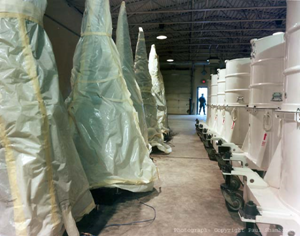John Fleck has an article on the Reliable Replacement Warhead Program in the Albuquerque Journal.
John makes some headway in attempting to chart the various ratonales for the program, which has its origins in a compromise between Senator Pete Domenici (R-NM) and Representative David Hobson (R-OH). (The Bulletin’s weblog has more.)
That compromise shifted $ 9 M from “Advanced Concepts” (which really was designing new nuclear weapons) to the “Reliable Replacement Warhead” program that would “improve the reliability, longevity, and certifiability of existing weapons and their components.”
The devil, however, is in the implementation.
NNSA and the labs have suggested that the program would support the development of new warhead designs—something might require testing or be used to develop new military capabilities inconsistent with US commitments under the NPT. Officials deny the former, but are more circumspect about the latter.
Admittedly, the distinction between modified and new warheads has always been a little arbitrary—something the Steve Rademaker preyed on in his speech scolding oponents of the RNEP for not also complaining about the B-61 Mod 11 (Rademaker didn’t mention the B-61 Mod 11 program was classified—more on this little lie later).
I stand by the questions that Senator Bill Nelson (D-FL) asked:
In this hearing I hope that we’re going to discuss a range of topics, topics on nuclear and strategic issues, and I want to focus on two topics.
The first, already mentioned here, is the Robust Nuclear Earth Penetrator. Last year Congress denied funds for the program, and in spite of this fact, the Fiscal Year ‘06 budget request for both the Department of Energy, National Nuclear Security Administration and the Air Force includes money for RNEP. It would appear that the administration is committed to going forward with this controversial program, not just completing the feasibility study. If the only goal is to develop earth penetrating capability that could be used for a nuclear or conventional weapon, it would seem logical that the focus of the effort would be a conventional and not a nuclear weapon. And we have had discussions about this in committee as well as on the floor of the Senate.
The second topic is the Reliable Replacement Warhead. The Congress—the American people need to understand what it will produce and what it will cost. Is it, as some hope, a pivotal change in the approach to nuclear deterrence that will enable real significant reductions in the number of nuclear warheads and reduce the cost of maintaining a nuclear arsenal? Is it an opportunity to have a serious review and discussion of nuclear weapons and nuclear policy? Or is it just an excuse to develop a new nuclear weapon and to return to nuclear weapons testing. And I hope our witnesses are going to provide some insight and clarity on that issue.
I also hope that we can get a clear understanding on the policy context for both of these initiatives: the RNEP and the Reliable Replacement Warhead. We need to understand the cost of each program, the impact these programs will have on the ability to make real reductions in the stockpile, and the impact that these programs will have on others. Will these programs have a deterrent effect or will it encourage other nations to start developing nuclear weapons?
I’d like to see the answers to those questions.
As for a serious review and discussion of nuclear weapons and nuclear policy, I highly recommend the National Academies 1997 study, The Future of U.S. Nuclear Weapons Policy.

